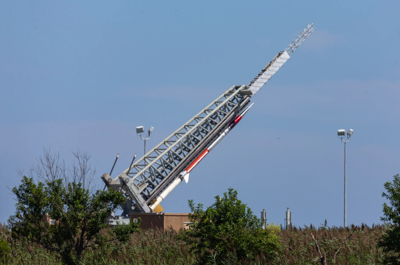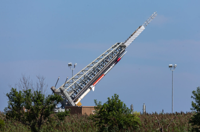WALLOPS ISLAND, VA - A sounding rocket carrying student experiments is set to launch this week from NASA Wallops Flight Facility in Accomack County.
According to NASA, the launch is part of their RockSat-X mission and is slated for Tuesday, August 13th. NASA expects the Terrier-Improved Malemute rocket carrying experiments designed by nine university and college teams to reach an altitude of 100 miles before parachuting back down into the Atlantic Ocean.
The launch currently has a mission window of 6 a.m. to 9 a.m. on August 13th, with backup days on August 14th-16th if necessary. NASA says the Wallops Visitor Center launch viewing area will open at 5 a.m. for onlookers.
“The RockSat program provides unique hands-on experiences for students in the development of scientific experiments and working in teams, so these students are ready to enter STEM careers,” said Dr. Joyce Winterton, Wallops senior advisor for education and leadership development.
Included in Tuesday’s launch are the following projects:
-The University of Alabama Huntsville is flying two primary experiments:
Joint Union of Payload Information and Technology between Experiments and Rockets (JUPITER), a custom spacecraft bus-like system that connects experiment hardware with existing launch vehicle electronics.
SwingSat will increase the technology readiness level of momentum exchange tether technology in the context of satellite constellation deployments.
-The University of Alberta will demonstrate instruments for characterizing plasma wave activity and electron microburst precipitation, specifically by resolving precipitating relativistic and sub-relativistic electrons. The project will be capable of measuring magnetic plasma wave oscillations, including chorus waves and ground-based Very Low Frequency transmitters. The outcome of this mission will improve the Technology Readiness Level.
-Clemson University’s experiment will measure electron density and temperature of the E region ionosphere, between 56- 93 miles (90-150 kilometers).
-The College of the Canyons experiment will deploy three capsules to gather data on greenhouse gases in the upper atmosphere to aid in the fight against climate change.
-The Community Colleges of Colorado, a collaboration of Arapahoe and Red Rocks Community Colleges, aims to evaluate how microgravity affects the mechanical properties of lunar regolith simulants sintered during suborbital flight. The mission will also create a cost-efficient star tracker using off-the-shelf materials and open-source software.
-Northwest Nazarene University is testing a space-rated robotic arm capable of tracking and capturing objects. The arm will deploy and catch three balls, then stow itself for reentry, and will also capture video footage of all the catch attempts.
-The University of Puerto Rico will collect environmental data of the atmosphere using humidity, temperature, and pressure sensors. Using an Ultra High Frequency antenna, telecommunications will use open-source protocols to beam down data to ground stations at Wallops. Uninterrupted Virtual Reality footage of flight will be used for STEM engagement.
-Virginia Tech’s experiment tests a space tether that provides a small CubeSat with power and a mechanical connection.
-West Virginia Space Collaboration, a collaboration of five West Virginia universities, will conduct nine independent experiments flying on the 2024 RockSat-X mission.



